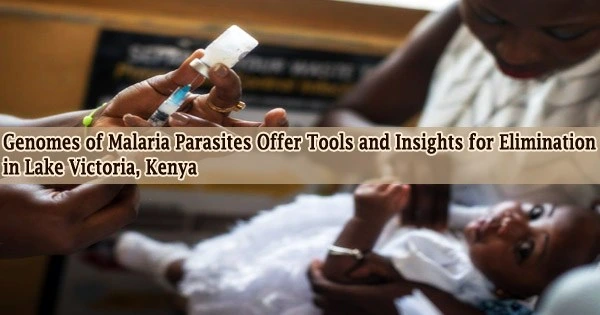Since 2016, there has been a slowdown in the reduction of deaths and incidence from malaria over the previous ten years. Additionally, constraints placed in place to contain the COVID-19 pandemic have further restricted malaria prevention initiatives including indoor residual spraying campaigns and the widespread distribution of bed nets.
For a better understanding of the epidemiology and dynamics of transmission, as well as the genetic underpinnings of drug resistance and disease severity, researchers are increasingly turning to the genomics of the malaria parasite in an effort to rekindle the momentum toward the elimination of malaria.
“A comprehensive picture of a population of parasites requires an understanding of them on the individual genome level,” says Professor Akira Kaneko of the Department of Parasitology, Osaka City University Graduate School of Medicine.
In order to successfully eradicate malaria, Professor Kaneko and his colleagues have been conducting numerous studies on the disease in and around Lake Victoria, Kenya, where the disease load is among the highest in the nation.
Kaneko and his colleagues generated whole genome sequencing data from 48 parasite isolates and compared them with parasites from other parts of Africa to learn more about the genomic diversity and population dynamics of Plasmodium falciparum, the most deadly malaria parasite in humans. The journal Scientific Reports published a description of their research.
P. falciparum parasites from Lake Victoria formed a distinct subpopulation within the larger East African parasite population, which was caused in part by the greater contribution of Central African parasites to the ancestral genomes of Lake Victoria parasites, according to analyses based on single nucleotide polymorphisms (SNPs) or point mutations.
We are especially excited about the potential application of the data we found regarding variations of P. falciparum and known drug resistance biomarkers we observed in parasite isolates from the area. Our work is expected to assist in the clinical management and disease control through surveillance activities in regions with high malaria burden.
Dr. Wataru Kagaya
The scientists also discovered a number of SNPs that may be employed in a molecular monitoring tool to identify P. falciparum’s primary migration and transmission routes.
“The population-specific SNPs we identified provide a high degree of small-scale specificity, typically to the country of origin,” states Professor Kaneko. “Combine these with the wider regional or continental view gained from population-specific organellar SNPs, and we could have the degree of resolution needed to generate an effective molecular surveillance tool.”
The study also noticed medication resistance indicators circulating among P. falciparum isolates around Lake Victoria, which was a crucial piece of the puzzle. They observed high frequency of mutations linked to sulfadoxine-pyrimethamine (SP) resistance as well as the maintenance of the primary resistance signature for the medication chloroquine.
The group thought that P. falciparum would continue to exhibit these polymorphisms as long as pregnant women (IPTp) continued to use SP as an intermittent preventive therapy.
“We are especially excited about the potential application of the data we found regarding variations of P. falciparum and known drug resistance biomarkers we observed in parasite isolates from the area,” says Dr. Wataru Kagaya, Medical Lecturer of the Department of Parasitology, Osaka City University Graduate School of Medicine.
One stood out in particular. They verified the existence of the S160N/T mutation in the gene Pfap2mu, which was first discovered in Kenyan children who experienced a delay in parasite clearance after receiving ACTs, the current standard of care for uncomplicated malaria.
“Our work is expected to assist in the clinical management and disease control through surveillance activities in regions with high malaria burden,” adds Kagaya.





